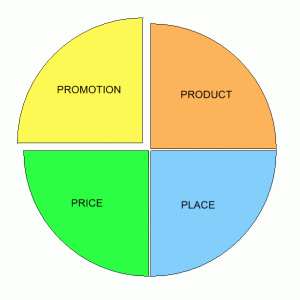Now that we have defined the Product & Place, we can start defining the Price you can charge for your services.

Marketing Mix (Price)
How Much
We have already defined what the product is. Your unique skill-set and experience is worth something on the job market. But how much is it worth? Where can you research this question?
These are four of the basic sources for looking up salaries of a job title. Most of the sites you visit will be using the Pay scale calculator from either payscale.com or salary.com. One of the other tools from Payscale.com is the Cost of Living calculator. The Cost of Living calculator takes your stated salary and applies a baseline cost of living from your starting location. Then it applies applies a cost of living index to the destination location. This will tell you what to expect in the potential destination location. This is an invaluable tool for evaluation of all your Placement options.
In the Place blog, I discussed several Market Options, (same occupation, different commute options) or (same location, different occupations)
Market X Range = _LOWER RANGE_ to __UPPER RANGE__ = Same Job Title + Location
Market 1 Range = _______________ to _______________ = _______________ + _______________ (Market 1 Salary Range, Local)
Market 2 Range = _______________ to _______________ = _______________ + _______________ (Market 2 Salary Range, Commute)
Market 3 Range = _______________ to _______________ = _______________ + _______________ (Market 3 Salary Range, Relocate)
Market Y Range= _LOWER RANGE_ to __UPPER RANGE__ = Different Job Title + Same Location
Market 4 Range = _______________ to _______________ = _______________ + ______________ (Market 4 Salary Range, Job Title 1, Local)
Market 5 Range = _______________ to _______________ = _______________ + ______________ (Market 5 Salary Range, Job Title 2, Local)
Market 6 Range = _______________ to _______________ = _______________ + ______________ (Market 6 Salary Range, Job Title 3, Local)
After researching the potential income range we need to find some other values.
Living Expenses = housing, food, utilities, etc. This will be pretty constant.
Commute Expenses = transportation expenses (gas, oil, bridges or mass transit fees)
Market X Expense = Monthly Expenses = __Living Expenses + Commute Expenses
Market 1 Expense = _______________ = _______________ + _______________ (Market 1 Salary Range, Local)
Market 2 Expense = _______________ = _______________ + _______________ (Market 2 Salary Range, Commute)
Market 3 Expense = _______________ = _______________ + _______________ (Market 3 Salary Range, Relocate)
Market 4 Expense = _______________ = _______________ + _______________ (Market 4 Salary Range, Job Title 1, Local)
Market 5 Expense = _______________ = _______________ + _______________ (Market 5 Salary Range, Job Title 2, Local)
Market 6 Expense = _______________ = _______________ + _______________ (Market 6 Salary Range, Job Title 3, Local)
The Final calculations we need to make are:
- Net Income = (Market Lower Range – Taxes)
- Discretionary Income = Net Income – “Monthly Expenses”
- Quality of Life = Fun things you want to do
Market X Minimum Comfort = ___________ = Employer Offer – (Taxes + “Market X Expense” + “Quality of Life”)
Scenario 1:
- Your Market X Expense = $2,600 = $1,200 + $400 +$100+$400+$500= (Rent+Food+Utilities+Transportation+Debt repayment)
- Quality of Life = $50/month so we can have fun once a month
- The Market X Range = $48,000 to $60,000
- Suppose an Employer offered you $48,000 OR $4,000/month
- Taxes at 30% is $1,200
- Market X Minimum Comfort = Employer Offer – (Taxes + “Market X Expense” + “Quality of Life”)
- Market X Minimum Comfort = $4,000 – ($1,200+ $2,600 + $50)
- Market X Minimum Comfort = $4,000 – ($3,850)
- Market X Minimum Comfort = $150
In Scenario 1, the Minimum Comfort level = $150. In other words each month you would have some wiggle room between paychecks if you save the $150 for a rainy day.
Scenario 2:
- Your Market X Expense = $3,000 = $1,600 + $400 +$100+$400+$500= (Rent+Food+Utilities+Transportation+Debt repayment)
- Quality of Life = $50/month so we can have fun once a month
- The Market X Range = $48,000 to $60,000
- Suppose an Employer offered you $48,000 OR $4,000/month
- Taxes at 30% is $1,200
- Market X Minimum Comfort = Employer Offer – (Taxes + “Market X Expense” + “Quality of Life”)
- Market X Minimum Comfort = $4,000 – ($1,200+ $3,000 + $50)
- Market X Minimum Comfort = $4,000 – ($4,250)
- Market X Minimum Comfort = -$250
In Scenario 2, the housing costs more. The Minimum Comfort level = -$250. In other words each month you would be losing money. This would be a time to renegotiate the terms of the salary. You would need to increase it by $250 every month just to break even. You would need to increase it by $3,000 + Taxes to cover the increase.
Scenario 3:
- Your Market X Expense = $3,000 = $1,600 + $400 +$100+$400+$500= (Rent+Food+Utilities+Transportation+Debt repayment)
- Quality of Life = $50/month so we can have fun once a month
- The Market X Range = $48,000 to $60,000
- You counter offer $53,000 OR $4,416/month
- Taxes at 30% is $1,324
- Market X Minimum Comfort = Employer Offer – (Taxes + “Market X Expense” + “Quality of Life”)
- Market X Minimum Comfort = $4,416 – ($1,324+ $3,000 + $50)
- Market X Minimum Comfort = $4,416 – ($4,374)
- Market X Minimum Comfort = $42
In Scenario 3, the Minimum Comfort level = $42. It’s not a great margin of comfort, but at least you’re not going negative like in Scenario 2.
The final blog in the Personal Marketing series will cover Promotion.


